Archive for Battle of the Brews
A Closer Look at Irrigation Systems – Part 2
Today irrigation systems vary, where some techniques used can be simple and some a bit more complicated, however the big question is which one will be best for your garden? To properly answer that question it would be best to take a look at the different types of irrigation systems, how they work and the benefits each offer.
Irrigation Types and Benefits
SURFACE IRRIGATION
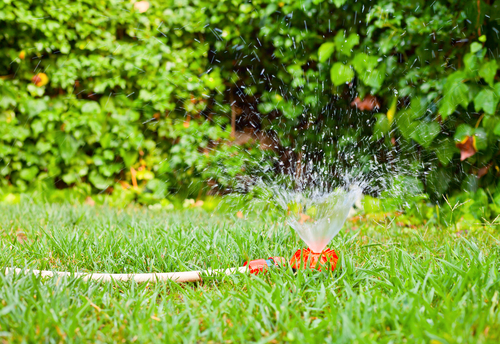
Surface irrigation is one of the oldest and most common methods of irrigation used. Dating back as far as far as the Egyptian and Mesopotamian civilizations this method uses the force of gravity to distribute water into the soil.
Later referred to as flood irrigation, simply because it allows water to flow and pool into an area, this is not as efficient as other irrigation methods because overwatering can occur, however it has still been successfully used throughout the centuries to produce healthy crops and lush, beautiful gardens.
Let’s Observe The Benefits You Can Get With Surface Irrigation
- Surface irrigation systems cover a large area of land in a faster time than that of other irrigation systems.
- It requires less manual labor.
- Irrigation systems are not negatively impacted by winds or sediments.
Depending on the type of gardening you do, you can determine if this type of irrigation system is more effective for you, however if you live in an area where water regulations are strict you may want to utilize a more conservative irrigation method.
SUB-SURFACE IRRIGATION
Similar to that of the low-drip method, sub-surface irrigation works by distributing water through tubes and emitters. As you can probably guess by the name of this system, the tubes that distribute water throughout this system are located below the surface of the soil.
Brought about in the 60’s as a way to deal with water scarce landscapes, this system works best in areas that are hot, arid, or windy to effectively provide plants with the water they need to thrive.
The Benefits Of Sub-Surface Irrigation Include
- By eliminating surface water sub-surface irrigation prevents water evaporation in hot and arid conditions.
- Reduces weed growth by depriving weed seeds of water.
- Because it’s below the ground, it protects the system from damage caused by animals or machinery.
If for some reason you still have a few unanswered questions on what irrigation method would be best for your landscape, then DK Landscaping is here to offer that expert advise you need.
Just a call or click away we can come in to evaluate your property and help you to decide on, and install an irrigation system that is not only efficient but effective enough to maintain the integrity of your landscape.
Contact us today at (707) 280-3632 to book an appointment or you can visit our website dklandscaping.com for more information.
Hire a Xeriscape Santa Rosa Expert When Facing Landscaping Problems
Some property owners have let their lawns go despite the intense focus on exceptional property exteriors and interiors. Though you might assume that the yard contributes little to your property, remember that people will base their opinion on what to expect in your interiors on what they see in your outdoors. Drab and messy lawns only paint your home or commercial premises in poor light.
You only get one chance for the best first impression, so you must make it count by hiring an expert to make your lawn. Some property owners think they have what it takes to plant and maintain exceptional landscapes. To them, a xeriscape Santa Rosa expert is unnecessary, even when in dry locations. Nonetheless, handling lawn care as a DIY project often leads to mistakes highlighted below.
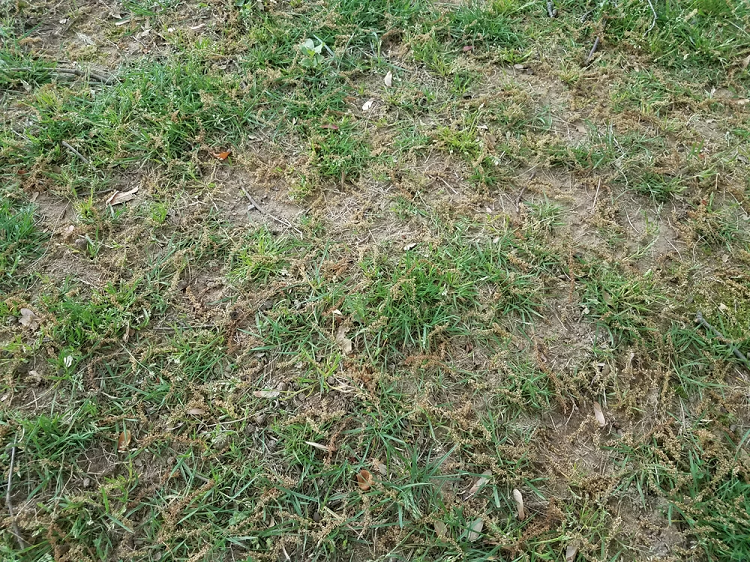
Too much shade
Shade is essential when putting together the perfect landscape. It protects plants affected by excessive sunlight and introduces some interesting height variations in your outdoor. Nonetheless, large trees and structures can lead to excess shade. An expert can help you choose the ideal trees to plant on your lawn for just the right amount of shade or raise the canopy of your trees.
Voles and moles, among other critters
It is easy to pick mole damage on your lawn. This critter creates tunnels under the soil, thus pushing the ground and creating unsightly ridges on your property. Raccoons and skunks can also invade your yard to dig for food. You need a lawn care company well-versed in ways of humanely getting rid of the critters on your lawn. Moreover, the experts will institute measures to protect your lawn from invasion by the common pests in your area.
Patchy grass
With this issue, you will notice that the grass in your outdoors grows at different lengths, strengths, and colors. The leading cause of a patchy lawn is spot seeding or reseeding with a different grass seed species from what you have used on the rest of your yard. It can also follow the wrong choice of a grass seed species for your soil or climate. Consulting a lawn care professional on the grass seed recommendation for your lawn will prevent patchy grass. For example, when reseeding northern lawns, it is best to use Kentucky bluegrass or perennial ryegrass, while tall fescue, Bermuda grass, or centipede grass work best for southern lawns.
Overwatering
Some property owners, especially those in dry areas and sandy soils, assume that watering their plants is the only way to ensure their lawns thrive. Though watering is essential, most DIY landscapers end up overwatering their lawns. Even in soils that retain water, plants have different water needs. When you overwater a lawn, you will usually notice mushrooms growing and the discoloration or yellowing of grass. Lawn care experts well versed in xeriscape Santa Rosa techniques will suggest alternative ways of ensuring your plants have enough moisture even in dry climates. They will also help you pick the right irrigation system for your space and use the right water amount to keep your plants thriving.
Compacted soil
The soil on your lawn is a living, breathing component. Its compaction following heavy equipment use and repeated mowing patterns shrinks the pores that promote the aeration of your soil, thus squeezing the life out of your lawn. Some of the signs of compacted soil are discolored, limp, dull, or thinning grass and pooling water. An expert will often regularly change your mowing patterns and aerate your lawn in the fall to ensure your plant roots have enough room for growth.
Turf diseases
If you notice a lesion on your leaf blades, patches, and a smutty substance on your lawn, these might be signs of lawn diseases. Some diseases like dollar spot and ascochyta are generally cosmetic, but others like necrotic ring spot can be deadly. There are several fungicides available for treating lawn diseases, but some can be deadly and worsen the condition. Hire a professional to evaluate the diseases affecting your lawn, recommend the right treatment for it and monitor your turf’s response to medication.
DIY lawn care is often an attempt at saving costs or putting everything you know about plants to the test. Though these are valid reasons, the above issues will cost you more money to manage than hiring a lawn care specialist well-versed in xeriscape Santa Rosa and other techniques of optimal lawn care.
For commercial properties, professional lawn care saves you on the dollars lost when some clients make a poor first impression of your business and opt for your competitors. Thankfully, professional lawn care is quite affordable and thus within everyone’s budget. Contact us today for the best-looking outdoor space.
Landscape Maintenance for Corporations
Landscape maintenance is a manicuring activity that is carried out at intervals on lawns and gardens to sustain or improve their physical outlook. This activity can be done weekly or fortnightly, depending on the negotiation between the property holder and the landscaping company. Corporations have an extensive yard area; hence, it will be most appropriate for them to opt for the weekly package. Professional landscaping companies usually have a catalog of services which they render to their client. Generally, several people believe that landscaping is only a term for trimming, but this is not the case. It extends beyond the trimming because it also incorporates many other processes like composting, pruning, watering, removing leaves, weeding, applying fertilizers, and removing snow.

You need to regularly divert your leisure time to cleaning and trimming your lawn area so that it can look good. This event happens when you are doing it by yourself, but when institutions and corporations want a perfectly groomed lawn, they need to engage professional landscape contractors. These contractors usually map out a maintenance plan, tools to be used, grooming methods, the right plants, irrigation system, and trimming design. You need to understand that landscapers choose these factors based on the climatic season. Company directors can clean their lawns during winter by removing the snow that has piled up in the office yard.
It is essential to hire a seasoned landscape contractor because the activity requires a bit of technicality. Veteran landscapers know what to do on a particular business site. For instance, they take note of the lawn area, the topography, the type of soil, and the elements that need to supplement the beauty of the garden. Similarly, they harness effective gardening methods such as soil aeration. Aeration enables water to drain into the deep parts of the soil, allows fertilizers to mix with the loosened soil, and circulates air for the swift growth of nursery plants.
Skilled landscapers embrace the ideal irrigation technique that facilitates water seepage into the roots of plants. Drip irrigation is the most suitable watering system because it allows water to seep through the soil, and it prevents the wastage of water. The right professionals also have a cognizance of the right kind of plants and the ideal gardening method to be used for any topography.
Businesses that adopt periodic maintenance of their lawns and courtyard tend to attract more clients because anyone that visits such business locations will fall in love with the landscape view. It is a subtle marketing strategy because it can eventually convert one-time visitors into real buyers and long-term clients. When the administrator of the company’s property gets in touch with an adept landscape contractor, both parties will have to agree on certain formalities and sign a legal contract that spans through the lawn maintenance period. Contact us for more information.
Landscaping Services – We do it Right!
Serious and well informed homeowners are the ones who invest time and money in landscaping services in order to ensure that their landscape is always beautifully designed and well maintained. This is because they understand the need to add value to their property in the event they might need to put it up on the market for a quick sale.
Most professionals are on the hunt for the best and most attractive job offers and find themselves moving and relocating to different states in order to get the job that pays top dollar. Others might move in order to benefit from lower costs of living that can be afforded in other states leaving them no choice to sell their current home and move to greener pastures.
Now when this happens you want to be in a position to sell your home at the best price and one sure way to do it is by the proper maintenance of its landscape. This not only adds value to the property but it provides a serene atmosphere for you and your family.
DK Landscaping Services
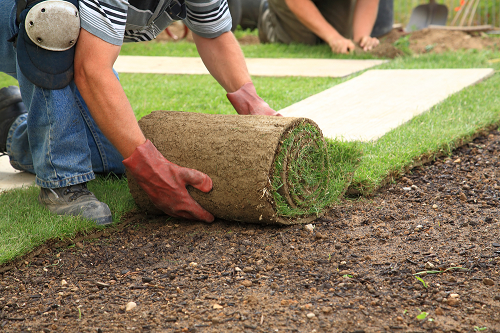
We at DK Landscaping offer the best home and commercial gardening services in Rohnert Park and Santa Rosa areas. We offer sound advice on how you can increase market value by installing the very best landscaping tools and techniques.
Many of our clients have been provided the opportunity to not only upsell their properties to the next buyer but also feel good knowing that they are offering a property that has been efficiently managed and maintained.
Our specialized team can manage all landscaping development projects including high end to low maintenance landscaping projects as well as irrigation installation projects. We remove shrubbery, cut trees and properly dispose of all waste in a manner that’s eco friendly and hassle free.
If you need to make a first time impression or simply just want to tidy your surroundings don’t hesitate to give us a call or contact us online for more information. You’ll be surprised to know that we’re more than what meets the eye.
Frequently Asked Questions About Drip Irrigation Systems
“The Secret Of Landscapes Isn’t Creation …It’s Maintenance.”-Michael Dolan
Micro- irrigation systems or drip irrigation as it’s more commonly referred, is basically a form of irrigation that supplies water toplant roots in a gradual manner. Extremely popular for its efficiency and its ability to promote water conservation, drip irrigation systems consist of a network of supply veins which run beneath the topsoil throughout the specified area, to thoroughly and strategically deliver a constant supply of water to plants.
They’re probably plenty of gardeners out there who find drip irrigation systems work well for their gardens but might not necessarily know everything they should about irrigation systems.
Unfortunately, because of this they may run into a couple problems that they may not be able to solve, so this article aims to answer any questions relating to irrigation systems that may prove difficult to answer.
Understanding Drip Irrigation Systems – Frequently Asked Questions & Answers
Q: How do you know if irrigation drip lines are working?
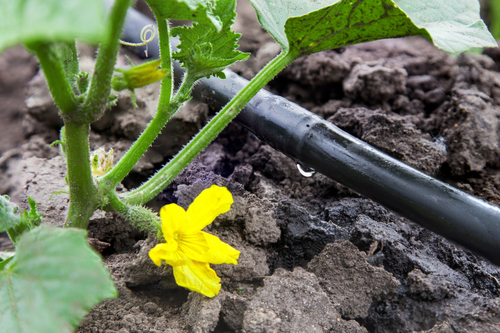
A: Since drip irrigation systems run beneath the topsoil it can be difficult to determine if it’s working. So, by simply observing the area after a few minutes of turning on the system to look for dampness in the soil around the line.
If your soil is mulched, just dig away a small portion of the mulch and soil with your hand and feel the soil to see if it’s moist or not.
Q: What’s the difference between a drip irrigation system and a ground sprinkler system?
A: Both systems function to deliver water to plants however a ground sprinkler system works by spraying a planted area above ground while a drip irrigation systems are located underneath the soil and deliver water directly to roots with a slow, consistent, drip.
Q: What type of garden is drip irrigation best suited for?
A: Drip irrigation systems are best suited for landscape beds with lots of plants and shrubs rather than lawns.
Q: How can a drip irrigation system benefit my garden?
A: Drip irrigation can offer gardens quite a few benefits once installed correctly. For instance, they prevent overwatering of plants and allow plant roots to absorb more water over a longer period of time, however some of the more popular benefits include its ability to promote water conservation, especially in drought-stricken areas and they offer a way for gardeners to save time and money.
Q: What difference will having a drip irrigation system make on my water bill?
A: As you can tell from its name a drip irrigation system practically drips water and emits water at a slower rate than above ground sprinklers or garden hoses.
With various settings, drip emitters may apply water at 0.5 – 4 gallons per hour where a rotor style sprinkler can water between 1 – 6 gallons per minute. See the difference yet?
You see, even though each landscape area differs in size drip irrigation systems can be set so that they have a slower application rate and higher efficiency. Based on this efficiency gardeners are able to reduce water usage by 50%. So, in other words, you’ll be cutting your water bill in half.
Q: Is a drip irrigation system difficult to install?
A: With easy to work with components, the process of installing a drip irrigation system is not difficult though there are certain guidelines you should follow. Basically, the process consists of weaving and arranging the tubing so that the supply of water is directed to the targeted areas.
Need Help With Drip Irrigation Systems?
If you don’t know how instal a drip irrigation system, don’t panic – help is just a call or click away. Don’t exhaust yourself spending hours in the sun struggling with irrigation tubes or worse stand in your garden and not know what to to to install your drip irrigation system. We can help.
Contact us at DK Landscaping Inc., to come in and assist you with professional irrigation system installation. Not only is our team knowledgeable about each aspect of irrigation installation but they will ensure you are well on your way without having to break a sweat. Call us today at (707) 280-3632 to schedule a visit or you can visit our website dklandscaping.com to learn more.
Learn How To Create The Perfect Xeriscape
When people say xeriscape they are referring to the practice of designing landscapes using slow-growing, drought-tolerant plants that aim to promote water conservation and reduce the need for regular maintenance.
Although recent drought conditions have created an urgency to adjust to different landscape practices like xeriscaping, many people still opt for xeriscape designs because they look amazing when finally complete.
Having said that, it’s important to remember that designing a xeriscape is not just throwing certain plants into some dirt and expecting them to look spectacular, it’s a process.
So, to help people to get a better grasp of things, we’d like to share some fundamental aspects on the best way to create the perfect xeriscape!
Accurate Designing Will Determine the Final Look
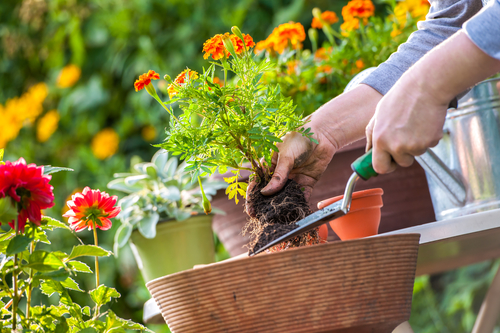
Now, to be as straightforward as possible, it’s important that people know that having plant material in the right place, is one of the most important aspects of xeriscaping.
Whether it be that you’re giving a facelift to an old landscape or designing a new one altogether, a proper design is vital – especially if you intend to conserve resources and achieve an amazing result.
Tips That Help With Xeriscape Design
- Assess the area for the presence of vegetation as this is an indication of whether plant material will grow well in that particular area.
- Arrange your xeriscape into of three different zones; a high water-use zone, a moderate water-use zone, and a low water-use zone. The high water-use zone should be very small, highly visible and watered as needed.The moderate water-use zone is usually a bit larger than the high water-use zone and is only watered when required. Now, the low water-use zone should be at least 60% of the area and only include plant types that are initially watered.
Using these straightforward tips you will be well on your way to creating a xeriscape design that’s efficient, practical, and easily maintained.
Soil Management And Soil Quality Is Important
Managing soil may probably be the part of xeriscaping that gardeners enjoy the least as it can involve a bit of hard work on their part but despite this, working with good, quality, soil while designing your xeriscape, is extremely important.
By knowing your soil’s strengths and weaknesses, you’ll know exactly what kind of amendments may be needed for healthy growth.
Nevertheless, always make sure to slope garden beds away from any buildings and plant drought-tolerant plants at the higher part of the slope.
Choosing The Right Plants
The best way to choose plants for your xeriscape would be to opt for more native plant species that may find it easier to adapt to your local environment.
It may be also smart to choose plants that have a slower growth rate that will mature with the rest of your landscape, add texture, and complement the surrounding area.
Here are a few plant choices you can use to make your xeriscape beautiful, functional and low maintenance:
- Southern Indian Azalea,
- Climbing Fig
- Creeping Juniper
- Sweet Alyssum
- Camellia
- Creeping Gardenia
- Jasmine
- Cleyera
- Indian Hawthorne
Why not let the professionals help you get started with creating the perfect xeriscape. Here at DK Landscaping, you can get the best xeriscaping services in California – Our professional team can come in and take care of all the hard work for you and all you have to do is sit back and watch you xeriscape mature and bloom.
Give us a call at (707) 280-3632 and our professional team will drop by to start the planning and preparation process. To learn more about our xeriscaping services you can also visit our website at dklandscaping.com.
A Closer Look at Irrigation Systems -Part 1
“Always Do Your Best. What You Plant Now You Will Harvest Later.” – OG Mandino
 If you take a trip to your local garden center, in hopes of finding the right irrigation systems, you can become overwhelmed with what’s out there. Everything from automatic sprinklers to special hoses and spray nozzles can be found and if you don’t know what you’re looking for things are bound to get complicated. The good news is, it doesn’t have to be that way.
If you take a trip to your local garden center, in hopes of finding the right irrigation systems, you can become overwhelmed with what’s out there. Everything from automatic sprinklers to special hoses and spray nozzles can be found and if you don’t know what you’re looking for things are bound to get complicated. The good news is, it doesn’t have to be that way.
In scenarios such as this, the experts at DK Landscaping Inc. can help to simplify this entire process; We can come in and install a suitable and effective irrigation system so that watering is one less task you have to worry about.
As indicated in many historical records, irrigation has been around for centuries and dates all the way back to ancient times, however, over time, with advancing technology and more developed techniques, irrigation has become more of an applied science.
The Most Popular Irrigation Systems Being Used By Gardeners Today
LOW-DRIP IRRIGATION SYSTEM
Trickle irrigation or low-drip irrigation as it is more commonly referred, simply speaks about the type of irrigation method which allows controlled amounts of water, to drip slowly to the roots of plants through narrow tubes equipped with emitters.
With this method, water is delivered directly to the base of the plant and is mainly designed to promote water conservation, especially for gardeners who reside in drought-stricken regions.
Oh, and there’s more; gardeners can also efficiently irrigate non-turf areas such as flower-beds, vegetable and perennial gardens, ground cover and hanging baskets using this method.
It’s clear to see why this is one of the most popular types of irrigation systems used as it really takes care of a lot of areas that need a consistent supply of water on a daily basis.
Here’s How You Can Benefit From Drip Irrigation
- The efficiency of drip-irrigation saves time, money, labor and water.
- By minimizing water contact with the leaves, fruit, and stems of plants it prevents fungal disease.
- Discourages weed growth since water is delivered directly to plant roots.
- Increases effectiveness on uneven ground.
SPRINKLER IRRIGATION
Over time the methods and techniques used throughout gardens have not only grown to be more practical but creative as well. Having said that what better way to describe this next irrigation system but as a practical and creative one.
A sprinkler irrigation system uses a method that applies water to plants and soil in a manner that mimics natural rainfall. With this method, water is pumped through a system of pipes and is distributed in the form of a spray into the air, through sprinklers that break up the water into small drops and uniformly fall to the ground.
Take A Look At The Benefits That Sprinkler Irrigation Offers
- Can be used for both large and small plots of land.
- Conserves water by directing water flow to specific areas of gardens.
- Has the ability to administer fertilizers and chemical treatments through the system.
This type of irrigation system works well for people who have lawns, large gardens and practice farming. If you are thinking about having an irrigation system installed please don’t hesitate to contact us for more information. Look out for part 2 on this topic.
The Ultimate Guide To Landscape Maintenance – v1
“A Landscape is a Living Space that Just Happens to be Outdoors” – GREG SOUTHARD
Didn’t quite get the most out of your gardening experience last season? Well, now that a new growing season is quickly approaching, you’re probably anxious to try a host of new ideas that you’ve included in your landscape maintenance plan which involves correcting all the things that went wrong last season.
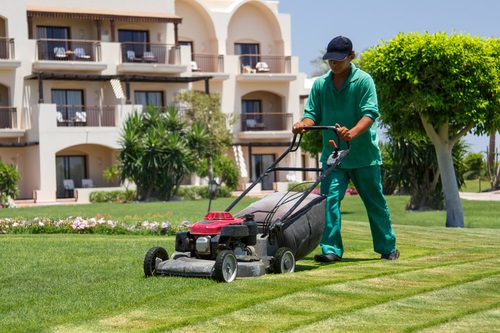
Well, what better way to get started this season, than with landscape maintenance? This not only gives you a chance to make wrong things right in your garden, but you can finally bring new ideas to life.
With that said, if you’re looking to achieve the best results, it’s highly recommended that you hire professional help, however it is still important that you make a checklist of all the areas within your landscape in need of maintenance so that you have a general idea of all the work that needs to be done.
Landscape maintenance can be a tedious task for any gardener or landscaper, however consistency is key. So after you have completed your initial landscape maintenance you might want to keep track of areas in your landscape that need constant attention if they are to stay well-maintained.
In this article, we’d like to discuss what many top landscapers consider to be some of the most important elements of landscape maintenance and how they should be used to keep landscapes fresh, beautiful and healthy.
Landscape Like The Pros! – Follow These Tips And Learn How You Can Maintain The Perfect Landscape!
Have you ever stood and admired a breathtaking landscape that was so beautiful, you wished it were your very own? Well, you can achieve the gorgeous, landscape you’ve always wanted. Apart from patience and dedication, following the fundamental elements of landscape maintenance can make your ultimate landscaping dreams a reality.
It’s really quite simple, landscape maintenance is very important if landscapes are to maintain healthy plants and trees.
There’s no landscaper out there who likes the ghastly sight of weeds or fungi in their garden, as these not only interfere with the look and health of landscapes but they rob the soil of essential nutrients and steal the sunlight that plants and trees need to thrive.
Here is a list of the most important aspects of landscape maintenance landscapers should follow to help them keep their landscapes lush and healthy while exuding beauty and sophistication. These include:
Turf Maintenance – Mowing
To commence with your landscape maintenance, you may want to begin with the largest areas of your landscape first, and mowing your turf is usually the best place to start.
One of the biggest concerns landscapers have with mowing turf is achieving a consistent, turf level throughout the landscape and though landscape maintenance doesn’t come without challenges there’s always a smart way to do things.
To make mowing your turf easy, start by mowing two strips around the perimeter of the turf and then continue by mowing in straight lines perpendicular to this; You can alternate the same pattern at every other mow if possible, until you cover the entire turf area. It may be a grueling task but once you stand back and take a look at the results, we’re sure you’ll be pleased with what you see.
In maintaining your turf this growing season, remember to mow weekly taking care not to remove more than 1/3 of the leaf blade at a time to ensure you maintain a sleek, level turf.
They say a good mower will mow wet turf and pick up clippings better, which once collected could be used later for other purposes like mulching.
Pruning and Trimming
Over the dormant winter period, when there’s not much, if any activity going on with landscapes, things can get a bit out of hand. Trees can accumulate lots of overgrowths, those that do survive the cold, while those that didn’t leave nothing but shells of branches and leaf litter behind.
At this point you know you have to do something to regain normalcy in your landscape, giving your trees, hedges, and bushes a chance to spring new life while helping to make things nice and organized again.
The trick to getting this done is to prune and trim trees and shrubs throughout your landscape; This keeps them looking attractive and producing new growth.
Pruning and Trimming is:
- Best done in the late Dormant Season
- To be done with the correct tools to avoid damaging or killing plants.
- A great way to avoid injuries and maintain safety in and around landscapes.
Even for some experienced landscapers pruning and trimming could be a bit complicated and if not done the right way could potentially kill a plant. This is one of the main reasons why it is recommended that people seek professional help when it comes to landscape maintenance as the professionals will know exactly what to do in these cases. Contact us for more information and look out for volume 2 of this topic.
Spring Fever? Check Out These Flower Bed Ideas!
Unlike that bad cold you had back in grade school, spring fever is something that you might actually want to catch. You know that you have spring fever if you’ve been planning out flower bed ideas and anxiously eyeing your garden for signs that you can start planting.
From annuals and pair bulbs to spring containers and early bloomers like petite flowers, there are steps that you can start taking today to make that spring fever work for you. The best place to start might be spring-blooming bulbs like daffodils and hardier annuals.
Think Daffodils, Snapdragon, Stock Flowers, Sweet Pea and Hyacinth

Hardy and half-hardy annuals are the way to go right now if you’ve got a green thumb and you can’t manage to set still. Half-hardy annuals like calendula and snapdragon flowers can withstand a light frost or two and add a full palette of color to your early spring garden.
- Calendula and Dianthus Flowers
Calendula flowers are sometimes known as pot marigold flowers and they’re great because they self-seed so that a handful of seeds really does go a long way towards beautifying your garden. And if you’re looking to add some nice clove scents to your garden, you might also want to throw in a few violet-colored dianthus flowers (growable in containers).
- Snapdragons are Very Hardy
If you’re in a climate that gets truly cold even into late winter, what kinds of flower bed ideas would actually be useful? Well, snapdragons are considered one of the toughest winter hardy flowers in the business since they can come back to full blossom even with significantly subzero temperatures.
- Keep Stock Flowers Around
Stock flowers are also fairly hardy, although they do best in spring and tend to wilt somewhat when summer rolls around. Because they have such a wonderful scent, though, you might consider tucking a container full of stock flowers in the back of your summer garden once they’ve started to wilt come late June.
- Daffodils and Hyacinths
Large bulbs with daffodils and hyacinths are always good to plant alongside your winter hardy flowers in early spring for the extra color and variety that they lend to a spring garden. Whereas peonies and lilacs like to bloom later on in the spring season, daffodils and hyacinths can start a little sooner and give you a head start on your summer garden.
Intersperse Flowering Shrubs with Your Flowers
You really want to think about your spring garden as more of a spring garden landscape. You’re going to be bringing together a lot of different colors, textures, and scents to create a full-on experience. Flowering shrubs look great, smell wonderful, and can even offer the partial shade that daffodils and hyacinths sometimes blossom best under.
- Forsythia Bushes
If you’re in a true four-seasons climate that’s more adventurous than tranquil year round, you might want to consider adding a few forsythia bushes to your spring garden landscape. Forsythia bushes are considered early bloomers, so you can expect to see forsythia’s yellow flowers beautifying your backyard oasis in plenty of time for spring.
- Azalea Blossoms
For more temperate climates where the temperature doesn’t get too cold in late winter or early spring, you should definitely check out azalea blossoms. Azalea is a veritable fixture in the Southeast part of the United States because the ubiquitous good weather there provides the partial shade and leaf litter that azaleas need to thrive and reach their potential.
For more flower bed ideas and advice about how to improve the look of your yard, contact us at DK Landscaping. We provide all our clients with maintenance, repair, irrigation and water savings tips.
Why You Should Be Mulching Your Garden
“The Love Of Gardening Is A Seed Once Sown That Never Dies” – Gertrude Jekyll
You ask why mulching? Well here’s a logical answer to that question, you see at the beginning of each growing season it’s typical for most landscapes and gardens to carry a rough and lifeless look. Rain and snow from last winter certainly seem to take a toll on a landscape that was thriving only a few months before.
Despite this, you put on your gloves and get started with preparing your garden for the upcoming planting season. Perhaps you’ve cleared the garden beds of last year’s leaf litter, laid down fresh soil and already planted a number of new plants.
Sounds promising but there’s still one thing you haven’t done to ensure the health and longevity of this season’s plantings and if you didn’t know, mulching is a popular gardening technique which basically uses certain organic and inorganic materials to cover soil.
Learn How Mulching Can Help Gardeners Achieve Appeal
Over time, mulching has proven to be a very effective gardening technique that lends help, protection and nourishment to blooms. In fact, gardeners who utilize mulch are guaranteed to see fantastic results throughout their garden.
Despite popular belief, mulching a garden goes way beyond modern, garden aesthetics and is more than just a colorful addition that complements a home’s exterior.
If you take a trip to your local garden center you’ll see that there are plenty of garden-bed coverage options available, that can benefit your garden one way or the other, however the big question is are they as effective as mulch?
The answer to that may very well be no since mulch can serve many purposes in gardens as opposed to using a number of different gardening products to achieve the same results. Firstly, because most forms of mulch are organic, they tend to help plants absorb and retain moisture, as well as to slow the process of evaporation from the soil.
Secondly, mulching is an excellent way to mitigate overwatering gardens by absorbing a great deal of the water that would otherwise waterlog the soil. Aside from this, when temperatures begin to soar in the summer, mulching plays an integral role in the health and growth of plants by maintaining the right amount of moisture when it gets too heated.
So in essence mulching is the perfect way to maintain consistent moisture levels in gardens when it’s heated since too much water can be just as bad as not enough water.
Mulch Offers Protection From The Elements So You Have Longer Lasting Blooms
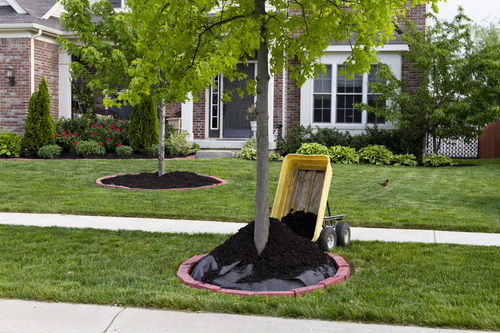
Any gardener knows that it’s inevitable for a garden to endure extreme conditions when the seasons change each year, so finding effective ways to offer plants protection is always something that gardeners have to take into consideration.
Again, mulching can serve as the ideal solution since it acts as a formidable shield against the elements. On extremely hot or windy days, mulch can effectively serve as insulation to prevent the evaporation of water from plants and during cold periods, it captures heat from the sun to help regulate the temperature of the soil. Additionally, it offers exceptional support to plants and stability to the soil, to help plants to stay firmly rooted, where gardens are situated in extremely windy regions.
Can You Say Weed Control? – Say Goodbye To Menacing Weeds With Mulching
Weeds are a gardener’s worst nightmare and though they can’t be avoided completely if left to grow, they can choke and hinder the growth of plants. Covering soil in mulch pretty much deprives weed seeds of the light they need for germination and since it also prevents weed seeds from coming in contact with the soil, they are not able to fully take root.
Mulching? – Take A Look At The Most Popular Types Of Mulch Gardeners Use
With all this talk about mulch and the exceptional benefits it offers you’re probably wondering which materials out there are best to use for mulching. Well, to be honest mulch can come in many forms but it is said to be more beneficial when used in an organic form.
Here are some examples of natural materials that can be used for mulching. These include:
- Wood Chips
- Grass and Straw
- Pine Needles
- Bark Nuggets
- Compost
- Leaf Litter
Organic mulches have been discovered to not only offer protection and heat to plants when they break down but they also provide essential nutrients and improve soil quality as well.
Some Gardeners Find Inorganic Mulches Work Well
Gardeners who do vegetable gardening or are into agriculture, tend to utilize these particular types of mulch more since apart from their typical benefits, they also serve a unique purpose. Some of these include:
- Gravel
- Stones
- Geotextiles
- Black Plastic.
Uniquely, inorganic mulches serve as an effective form of pest management but along with this they help prevent root rot, allow for increased air permeability and permit easier rainfall penetration to plant roots.
So depending on the gardening environment, the choice of mulch used is usually determined by what is being grown and the existing conditions within a particular garden.
Since this article wouldn’t be complete without making mention to how mulch is applied in a garden, we’ll get straight into the juicy details on the right way to apply mulch.
No More Mistakes – Mulching The Right Way Brings The Best Results
Though many people may be under the impression that mulching is nothing more than spreading a bit of grass or wood chips at the top of garden beds, FYI it’s not. Mulching is actually a very beneficial gardening technique should it be done accurately.
To give you a better idea of how you should really be applying mulch, here is a definitive guide to mulching the correct way. Follow these steps and you’re sure to see mind-blowing results.
- Firstly, you will have to make an honest determination of how much mulch you will need to buy to get adequate coverage throughout your garden, especially if it is to be laid down nice and thick. ( Be careful not to add too much mulch as you can suffocate the plants)
- Once you’ve purchased your mulch and ready to go, your next step would be to give your soil a good turning and apply any product nutrients such as fish meal or blood meal before you lay down your mulch.
- For gardeners who are mulching to combat weeds, it is important that you must first remember to weed the soil beforehand. This is essential if mulching is to be done properly and for it to be effective and secondly it should be laid down thick enough to discourage the reappearance of new weeds.
- Now it’s time to lay down your mulch. When using organic mulches like shredded bark, wood chips or leaf litter, these should be laid down about 3 inches deep and shredded hardwood spread no more than 2 to 3 inches deep. For mulch consisting of coarse bark nuggets 3 to 5 inches deep should suffice and for landscapes that include trees, these can be mulched at about 8 inches off the ground.
- Although the laying of mulch is fairly easy, HOW it is placed is another thing and if not done correctly, can hamper plants. Therefore, when laying mulch down, it should be kept no less than an inch away from the crowns and stems of plants. This is mainly because wet mulch resting against the stems of flowers and vegetables can cause rot. So without further ado, it’s time to get started.
What’s your favorite type of mulch? “Personally, I’m a black mulch, shredded wood kind of gardener.” – Garden Enthusiast.
Do you need help mulching? Don’t know what mulch you should get? Call us at DK Landscaping we will gladly help you with mulching your garden. We also provide expert advice on the best mulch to use for your garden and even help you pick it out at the store.
We can mulch your entire landscape and take all the stress off your hands. Contact us at (707) 280-3632 to schedule your appointment or you can also visit our website dklandscaping.com for more information on our services.





